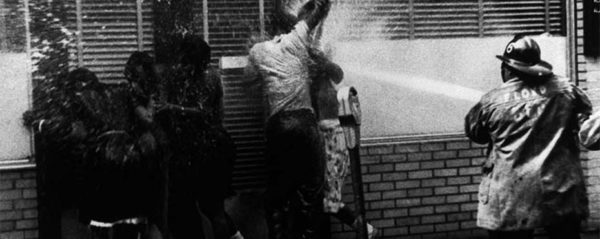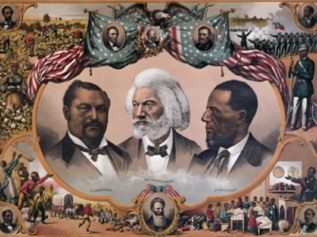This is Part-two of a three-part story the everyday experiences of African Americans that lived during the Jim Crow era (1896-1960’s). The first part focused on racial violence and the loss of land. Part-2 of the story will focus on the violent history of African American women and children enduring rape and the long term collective psychological consequences, segregation stress syndrome.
By: Dr. Ruth Thompson-Miller
Jim Crow and Rape
Historical accounts of interracial sexual violence in Jim Crow suggest multiple reasons for rape in the Jim Crow era. Similar to rape in slavery, feminist scholars emphasize the element of power and domination in rape. In the South, young girls who were domestic workers were told to watch out for the white men and boys in the house and to protect themselves. According to sociologist Patricia Hill Collins in her book, Black Sexual Politics: African Americans, Gender and the New Racism, reifies the reality of how dangerous it was for young Black girls and women after slavery:
“No longer the property of a few White men, African American women became sexually available to all White men. As ‘free’ women who belonged to nobody except themselves and in a climate of (racial) violence that meted out severe consequences for their either defending themselves or soliciting Black male protection, Black women could be raped.” (pg. 65).
According to Angela Davis, “Rape was a weapon of domination, a weapon of repression, whose covert goal was to extinguish slave women’s will to resist, and in the process, to demoralize their men.” In his book The Black Middle Class, Benjamin Browser expresses legitimate concerns these rapes have resulted in splintered relationships between Black men and women. Browser asserts,
“There were untold incidents of white night riders who visited prosperous black farmers, threatening them if they did not leave, raping the farmers’ wives and daughters, and then burning down houses and barns for good measure. The impact of this history is with us to this day in traumatized black family systems.” (p.48)
There was little to deter whites from committing sexual violence. Historically, the raping of African-Americans in the U.S. was not considered a crime (legally and/or in practice).
“They Were Rapes!”
In the book, Jim Crow’s Legacy: The Lasting Impact of Segregation, we conducted nearly 100 interviews with older African Americans that survived Jim Crow. A retired service worker in her late sixties shares her experiences of rape in her community when she was growing up:
There were rapes! The white man would rape girls. . . . If a white man see a half-way decent woman, if he wanted her, he went up and just grabbed her and start doing whatever he wanted to do to her. You know, she would fight, and say no, but he would beat her up, slap her, knock her down, and just, just take her. . . . (Thompson-Miller, Feagin, Houts 2015, pg.99).
This respondent articulates the overt socialization she received from her family: listen and defer to whites. Importantly, this respondent takes it for granted that whites would look for lack of deference as an invitation for violence. Again, sexual assault should not be reduced to some men not controlling their erotic desires, but as a powerful tool of systemic subordination and social control of oppressed people of color including the unimaginable rape of innocent young girls.
The Unimaginable Atrocity of Jim Crow: The Rape of Young Girls
Additionally, the authors, Thompson-Miller, Feagin, and Houts describe some of the Black newspaper reports documenting the rape of young girls. They chose to leave the names of the children out to protect their identity.
“In the Chicago Defender, see ‘White Man Charged with Rape of Eight-Year-old,’ The rape of a little girl in Kansas by a 62-year-old white man and the newspaper called the child one of the ‘best citizens of the race.’ The white rapist admitted, ‘that he lured the young girl by offering her a quarter,’ and that he was drunk. A white doctor verified the rape noting, ‘There was not a question as to what had been done.'” (Chicago Defender, Oct. 23, 1915, pg.1).
“In Lexington, Kentucky, in 1926, a white man abducted at gunpoint two black sisters (aged 11 and 17) who were walking home one evening. He raped the younger girl while her older sister watched and was unable to assist her sister. After the attack he forced the girls to walk through the streets half naked. The older sister escaped and got help.
The Chicago Defender reported that the 11-year-old ‘is in a sanitarium in a serious condition, due to the assault, and her sister is at home suffering from exposure and severe nervous shock’” (Chicago Defender, 1926, pg. 118-119).
In the Chicago Defender, in the border state of Missouri, on May 31, 1919, a Chicago Defender headline read, ‘White Man Rapes Six-Year-Old Girl.’ A 35-year-old white man raped a six-year-old in her home while her mother was a visiting friend. The rapist followed the six-year-old home from school, he ‘gave her a nickel, forced her to sit upon his knee, and attempted to assault her. The mother returned to find the 35-year-old in the bedroom with her daughter, and the child’s clothes ‘were badly torn and blood stained.’ The white man didn’t deny police.” (Chicago Defender, 1919, pg. 1)
Unfortunately, I could tell story after story of young children, young girls and women being raped by white men in the Jim Crow South. However, I would argue that after the rape, the trauma, and the lack of judicial process, these young women and their families are left to deal with the long-term physical and psychological consequences of the trauma. In almost all the instances, the young women didn’t seek counseling, get psychological assistance or reveal the entire details of the events. The one young girl who ended up in the sanitarium received assistance. However, without follow-up information, we can’t be sure that the mental health care she was given assisted her in overcoming the horrific rape that she experienced. The research clearly states, that the trauma of rape is a high predictor of PTSD in an individual. However, I argue for African Americans in the Jim Crow south, the traumas and the psychological consequences were collective. In the Jim Crow south, African American communities were struggling with collective trauma, I argue, “segregation stress syndrome is a collective form of PTSD.
Segregation Stress Syndrome: Collective PTSD
The Long-Term Psychological Consequences of Racial Violence, Rape and Torture
The physical and psychological devastation that occurs for the victims of rape has been well documented. Catherine Clinton in the book, The Plantation Mistress: Woman’s World in the Old South, discusses the occurrences of rape. The literature on the consequences of rape clearly states that the trauma of rape almost certainly leads to a lifetime of psychological challenges. E.B. Foa, B.O. Rothbaum, D.S. Riggs and T. Murdock indicate in the article, Treatment of Posttraumatic Stress Disorder in Rape Victims: A Comparison between Cognitive Behavioral Procedures and Counseling that nearly 94 percent of women who are raped meet PTSD requirements shortly after the rape. In the article, A Critical Review of Research on the Mental Health of Older African Americans, Terry Mills and C. Edwards state, “The probability that African American women and girls who were raped in Jim Crow suffer from symptoms of PTSD is highly probable.” In addition, the Ku Klux Klan inflicted much racial violence and fear on African-Americans, from house and church burnings to all day marches through the African American community with the purpose of instilling fear.
Segregation stress syndrome is the result of the long-lasting racial violence that occurred during the Jim Crow era. Segregation stress syndrome focuses on African-Americans as a collective group. Post-traumatic usually focuses on the experiences of one individual. There are several traumatic events that can generate symptoms of segregation stress system in African-Americans as a collective group. The hearing, witnessing and/or experiencing of a racial traumatic event, including the inability to protect a loved one from harm (watching helplessly), loss of a loved one, lynchings, the threat of death, the loss of land, rape and sexual coercion, can lead to symptoms of segregation stress syndrome. Similar to PTSD, “the traumatic event must have involved a threat [to the life] of self or others and elicit a response of fear, helplessness, or horror in the exposed individual.” The characteristics of the symptoms of segregation stress syndrome include being fearful, avoidance (an inability to be around the group members of the individuals who perpetuated the traumatic event).
Numerous respondents exhibited trauma symptoms throughout their interviews. A retired domestic worker who was interviewed for the book, Jim Crow’s Legacy: The Lasting Impact of Segregation, answered several questions with ease before she was asked the question, “Do you remember your first encounter with a white person?” At that moment she became tense, as sweat formed on her forehead. She could not recall her first encounter in the 1930s, but remembered the way in which she had framed her responses to whites:
“During the time that I was coming up we were always taught to, always especially to a white person, they would tell us always be obedient to them. ‘Yes sir, no sir, yes madam and no madam.’ … That is the way I tried to bring my children up too. ‘Always be obedient. Be obedient to them. Never be sassy.’ I tried to tell them, ‘I have been obedient, and I have listened to a lot of instruction that I got from my foreparents. I don’t know how I would have brought you all up if I had not been obedient.’ My dad and my stepmom would always have us together, and he would talk to us about different things and how to ‘be obedient. …[to] white people during that time, [or] they may find you dead somewhere. (Thompson-Miller, Feagin, Houts 2015)
The respondent’s composure shifted from comfortable to anxious as she shared early lessons for surviving the brutality of Jim Crow patterns. Death was indeed a potential consequence of not being compliant and deferential to whites, so teaching obedience to children was critical. As we have seen throughout this article, Black Southerners certainly knew “their place,” we have read about racial violence, rapes and lynchings. However, the Ruby McCollum case gives us an opportunity to hear the words of the victim, the sequence of events that led to the day that she decided to end her torment and expose the culture of rape in the South. In her trial documents she states that they struggled over the gun. However, in order to stop the rapes, abuse and psychological torment, something had to be done with Doc Adams.
Dr. Ruth Thompson-Miller is assistant professor of sociology at the University of Dayton. Her research specializations are race and ethnicity, mental illness, and the elderly. She received the American Sociological Association (ASA)-National Institute of Mental Health-Minority Fellowship Award (3 years). She co-authored the book, Jim Crow’s Legacy: The Lasting Impact of Segregation (Rowman and Littlefield, 2015). She has several and book chapters including in the Counseling Psychology, Sociology of Racial and Ethnic Relations, and Violence Against Women and appears in the a documentary about Ruby McCollum story, “You Belong to Me: Sex, Race, and Murder in the South.



